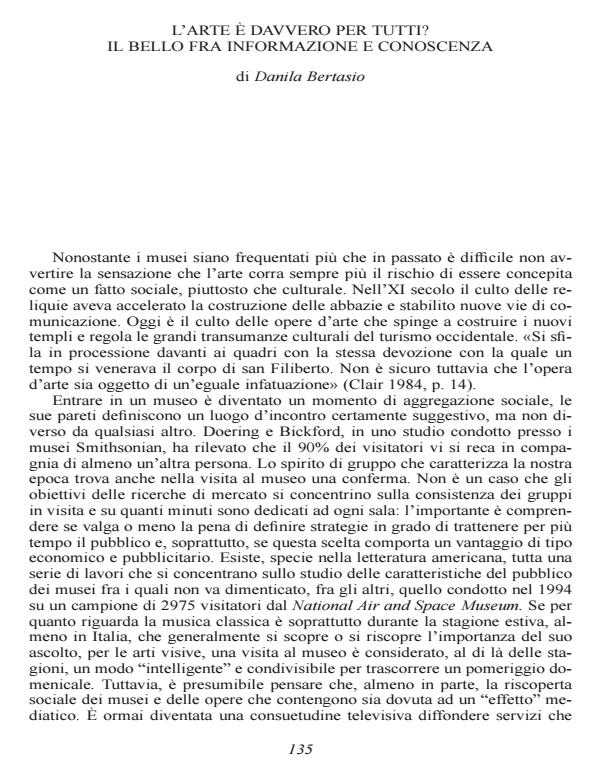L'arte è davvero per tutti? Il bello fra informazione e conoscenza
Titolo Rivista SOCIOLOGIA DELLA COMUNICAZIONE
Autori/Curatori Danila Bertasio
Anno di pubblicazione 2005 Fascicolo 2004/35-36 Lingua Italiano
Numero pagine 10 P. Dimensione file 43 KB
DOI
Il DOI è il codice a barre della proprietà intellettuale: per saperne di più
clicca qui
Qui sotto puoi vedere in anteprima la prima pagina di questo articolo.
Se questo articolo ti interessa, lo puoi acquistare (e scaricare in formato pdf) seguendo le facili indicazioni per acquistare il download credit. Acquista Download Credits per scaricare questo Articolo in formato PDF

FrancoAngeli è membro della Publishers International Linking Association, Inc (PILA)associazione indipendente e non profit per facilitare (attraverso i servizi tecnologici implementati da CrossRef.org) l’accesso degli studiosi ai contenuti digitali nelle pubblicazioni professionali e scientifiche
At the present time art is more and more considered a social fact rather than a cultural one, to the point that it doesn’t seem to appeal to the public opinion and, in particularly, to the new generations, if not in the sense of a more or less banalizing social aggregation. The relationship that audience seems currently to prefer that makes art an object to use - has some analogy with the relationship that we generally set up with another area of the cultural phenomenology, that is the relationship we set up with the new technologies. By analysing how we use the available technologies, we can guess an anthropological trend, according to which knowledge is important for human beings, but only on condition that they can pursue it avoiding the models of the critical thought. Also in the art information seems to replace knowledge, use seems to replace fruition, stressing in the general perception the consumer and utilitarian aspect instead of the aesthetical satisfaction.;
Danila Bertasio, L'arte è davvero per tutti? Il bello fra informazione e conoscenza in "SOCIOLOGIA DELLA COMUNICAZIONE " 35-36/2004, pp , DOI: